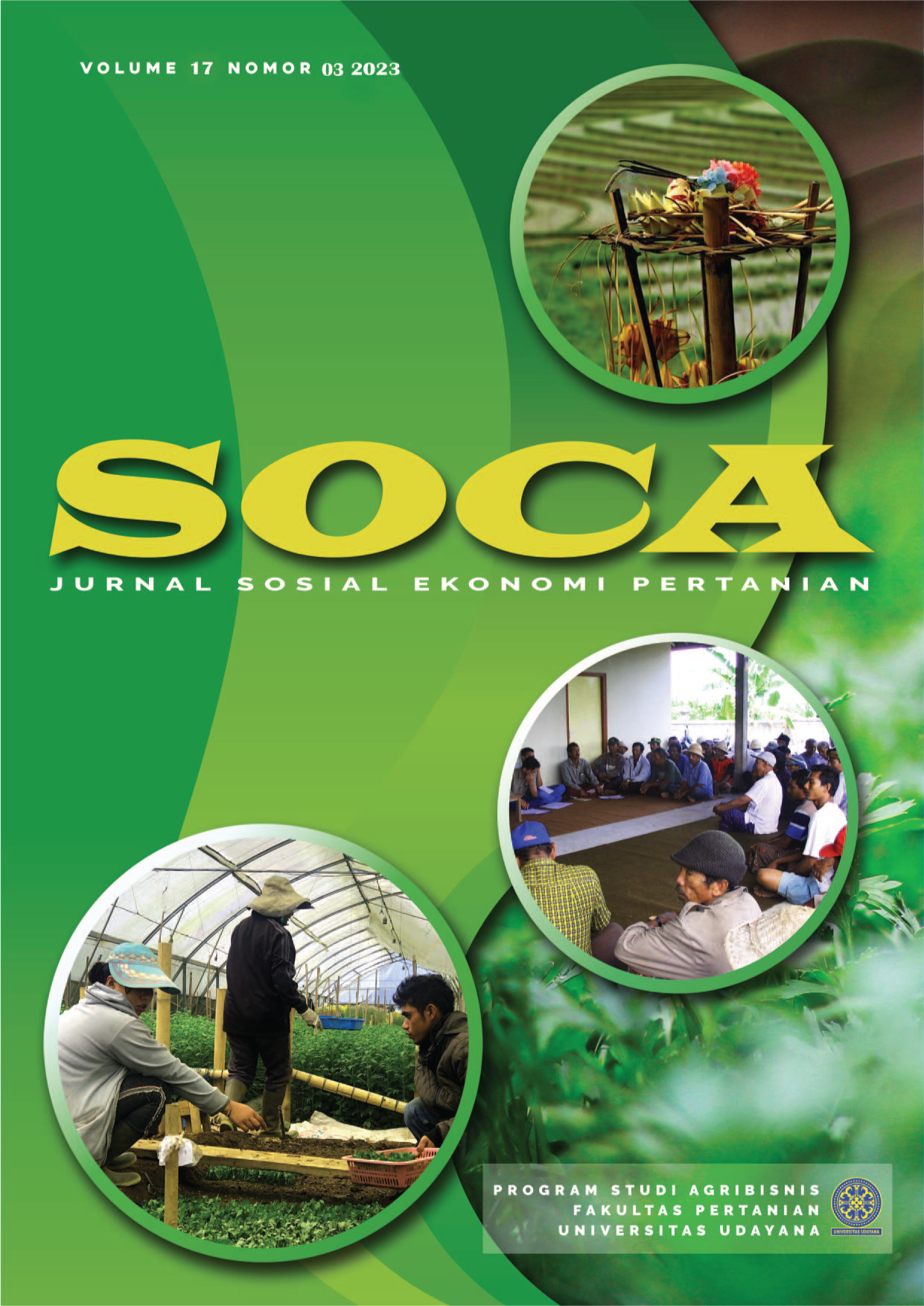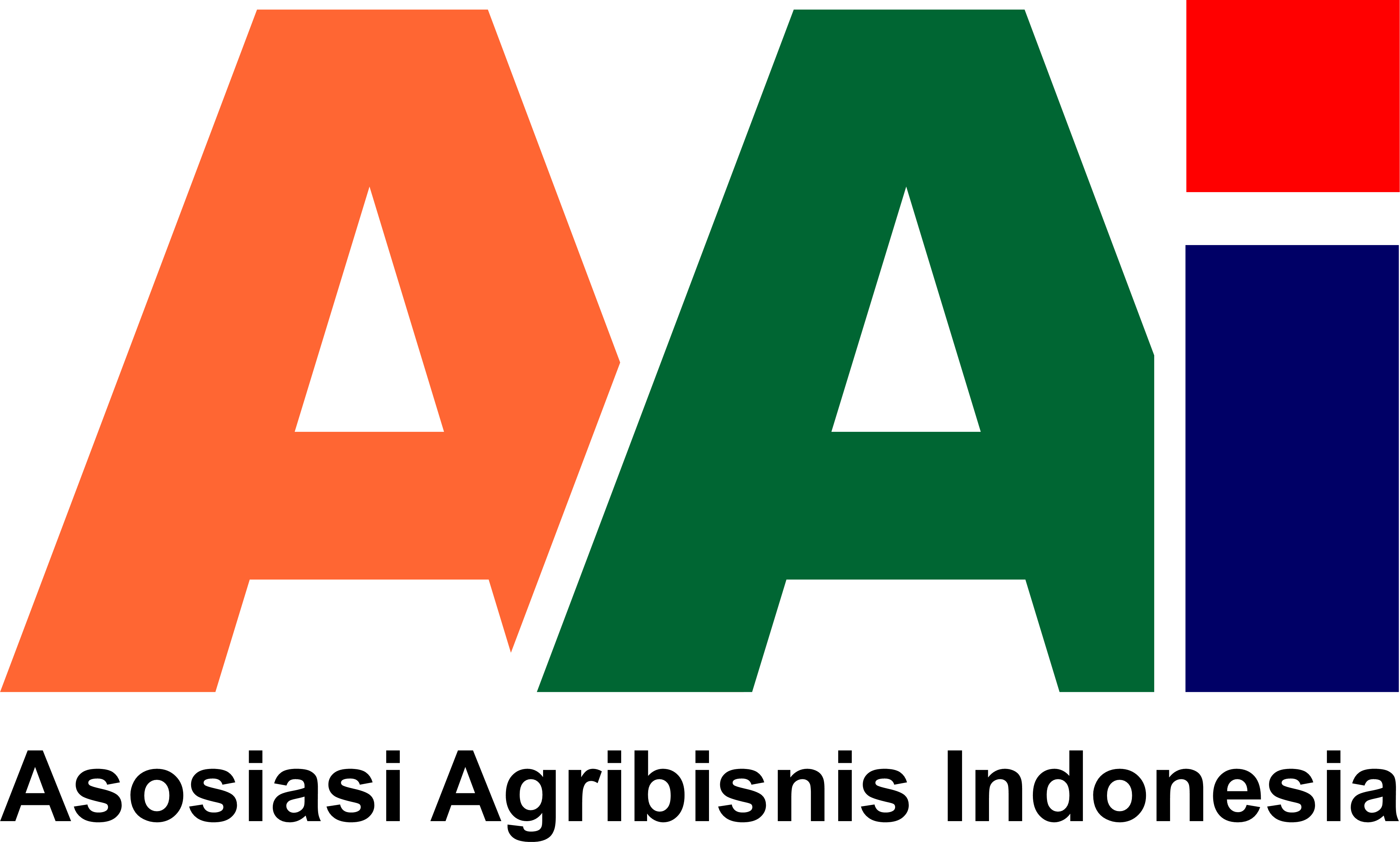The Human Resource Management in Greenhouse Hydroponic Businesses
Abstract
Malang Raya is one of the vegetable-producing areas in East Java leading to many latest innovations related to vegetable cultivation, such as the hydroponic greenhouse system. This study aims to determine human resource management in hydroponic greenhouse farming in the Malang Raya area through business characteristics, work types, company organizational structure, human resource management functions, payroll and bonuses, and labor allocation. This research used qualitative research methods that were processed by data reduction using Excel with data collected from 15 managers and actors of hydroponic greenhouse farms located in the Malang Raya area. Meanwhile, the data processing method was descriptive quantitative and descriptive qualitative analysis. The results of this study showed that most hydroponic farmers in the Malang Raya area use the NFT system with 2 different greenhouse models, namely open greenhouses and closed greenhouses. Most of them have a workforce of less than 5 people who work mostly 4 hours per day. The division system of labor is based on individual expertise with the dominance of technological development to maintain work effectiveness. The recommendation is to develop human resource management through a planned division of labor to improve the quality of workers and agricultural income
Downloads
References
Alreahi, M., Bujdosó, Z., Kabil, M., Akaak, A., Benkó, K. F., Setioningtyas, W. P., & Dávid, L. D. (2023). Green Human Resources Management in the Hotel Industry: A Systematic Review. In Sustainability (Vol. 15, Issue 1). https://doi.org/10.3390/su15010099
Amaluddin, L. O., Hildayanti, H., Eso, R., Musyawarah, R., Sugiarto, A., Shrestha, R. P., Ramadhan, M. I., & Sejati, A. E. (2023). The Contribution of Water and Sunlight to the Lettuce Production. SOCA: Jurnal Sosial Ekonomi Pertanian; Vol 17 No 1 (2023): Vol 17 No 1 (2023). https://doi.org/10.24843/SOCA.2023.v17.i01.p01
Bonini, S., & Capizzi, V. (2019). The role of venture capital in the emerging entrepreneurial finance ecosystem: future threats and opportunities. Venture Capital, 21(2–3), 137–175. https://doi.org/10.1080/13691066.2019.1608697
Boon, C., Den Hartog, D. N., & Lepak, D. P. (2019). A Systematic Review of Human Resource Management Systems and Their Measurement. Journal of Management, 45(6), 2498–2537. https://doi.org/10.1177/0149206318818718
Cooper, M., & Nguyen, Q. T. K. (2020). Multinational enterprises and corporate tax planning: A review of literature and suggestions for a future research agenda. International Business Review, 29(3), 101692. https://doi.org/10.1016/j.ibusrev.2020.101692
Cournut, S., Chauvat, S., Correa, P., Santos Filho, J. C. Dos, Diéguez, F., Hostiou, N., Pham, D. K., Servière, G., Sraïri, M. T., Turlot, A., & Dedieu, B. (2018). Analyzing work organization on livestock farm by the Work Assessment Method. Agronomy for Sustainable Development, 38(6), 58. https://doi.org/10.1007/s13593-018-0534-2
Despommier, D. (2009). The rise of vertical farms. Scientific American, 301(5), 80–87. https://doi.org/10.1038/scientificamerican1109-80
Dessler, G. (2015). Human Resource Management. Pearson. https://doi.org/10.4236/ib.2009.11005
Dominguez‐Folgueras, M. (2022). It’s about gender: A critical review of the literature on the domestic division of work. Journal of Family Theory & Review, 14(1), 79–96. https://doi.org/10.1111/jftr.12447
Eliyatiningsih, E., Erdiansyah, I., Kartika Sari, V., & Nurahmanto, D. (2023). Herbal Plant Farming Development Strategy. SOCA: Jurnal Sosial Ekonomi Pertanian; Vol 17 No 1 (2023): Vol 17 No 1 (2023). https://doi.org/10.24843/SOCA.2023.v17.i01.p02
Frasetya, B., Harisman, K., & Ramdaniah, N. A. H. (2021). The effect of hydroponics systems on the growth of lettuce. IOP Conference Series: Materials Science and Engineering, 1098(4), 42115. https://doi.org/10.1088/1757-899X/1098/4/042115
Ganster, D. C., Rosen, C. C., & Fisher, G. G. (2018). Long Working Hours and Well-being: What We Know, What We Do Not Know, and What We Need to Know. Journal of Business and Psychology, 33(1), 25–39. https://doi.org/10.1007/s10869-016-9478-1
Hunowu, M., Tamu, Y., Obie, M., & Badu Pakuna, H. (2021). Modernization and Shifting Practices of Local Wisdom on Corn Farming in Gorontalo Province. Sodality: Jurnal Sosiologi Pedesaan, 9(2 SE-Articles). https://doi.org/10.22500/9202134841
Jia, X. (2023). Digital Economy, Factor Allocation, and Sustainable Agricultural Development: The Perspective of Labor and Capital Misallocation. Sustainability, 15(5), 4418. https://doi.org/10.3390/su15054418
Kumar, S., Singh, M., Yadav, K. K., & Singh, P. K. (2021). Opportunities and constraints in hydroponic crop production systems: A review. Environment Conservation Journal, 22(3 SE-Original Articles), 401–408. https://doi.org/10.36953/ECJ.2021.22346
Lee, S., & Lee, J. (2015). Beneficial bacteria and fungi in hydroponic systems: Types and characteristics of hydroponic food production methods. Scientia Horticulturae, 195, 206–215. https://doi.org/https://doi.org/10.1016/j.scienta.2015.09.011
Liu, T., Bruins, R. J. F., & Heberling, M. T. (2018). Factors Influencing Farmers’ Adoption of Best Management Practices: A Review and Synthesis. In Sustainability (Vol. 10, Issue 2). https://doi.org/10.3390/su10020432
Martin, M., & Molin, E. (2019). Environmental Assessment of an Urban Vertical Hydroponic Farming System in Sweden. In Sustainability (Vol. 11, Issue 15). https://doi.org/10.3390/su11154124
Muharram, M. M. (2021). Pengembangan Kapasitas Petani. Sumber Daya Manusia Sektor Pertanian Dalam Berbagai Perspektif, 120.
Noe, R. A. (2010). Human Resource Management: Gaining a Competitive Advantage. McGraw-Hill Irwin.
Ong, R. J., Raof, R. A. A., Sudin, S., & Choong, K. Y. (2021). A Review of Chatbot development for Dynamic Web-based Knowledge Management System (KMS) in Small Scale Agriculture. Journal of Physics: Conference Series, 1755(1), 12051. https://doi.org/10.1088/1742-6596/1755/1/012051
Pivoto, D., Barham, B., Waquil, P. D., Foguesatto, C. R., Corte, V. F. D., Zhang, D., & Talamini, E. (2019). Factors influencing the adoption of smart farming by Brazilian grain farmers. International Food and Agribusiness Management Review, 22(4), 571–588. https://doi.org/10.22434/IFAMR2018.0086
Rahmania, S. N., & Kriswibowo, A. (2022). Manajemen Badan Usaha Milik Desa (BUMDES) Kebaron Mandiri Makmur Desa Kebaron Kecamatan Tulangan Kabupaten Sidoarjo. Anterior Jurnal, 21(2), 49–57. https://doi.org/10.33084/anterior.v21i2.3241
Redu, S. T., Vernanda, V., & Sumaryadi, A. (2023). Analysis of Base And Non-Base Sectors in The Economic Development of Jayawijaya Regency. SOCA: Jurnal Sosial Ekonomi Pertanian; Vol 17 No 2 (2023): Vol 17 No 2 (2023). https://doi.org/10.24843/SOCA.2023.v17.i02.p01
Risa, N. E. W. (2018). Manajemen usaha budidaya rumput laut (eucheuma cottoni) di Desa Salemba, Kecamatan Ujung Loe, Kabupaten Bulukumba. Agrominansia, 3(2), 181–192. https://doi.org/10.34003/285233.
Savira, R. D., & Prihtanti, T. M. (2019). Analisa Permintaan Sayuran Hidroponik Di Pt. Hidroponik Agrofarm Bandungan. Agrilan: Jurnal Agribisnis Kepulauan, 7(2), 164–180. https://doi.org/10.30598/agrilan.v7i2.906
Silva Taveira, L. R., De Carvalho, T. S., Dos Santos Teixeira, A. F., & Curi, N. (2019). Sustainable productive intensification for family farming in developing tropical countries. Ciencia e Agrotecnologia, 43. https://doi.org/10.1590/1413-7054201943012819
Silva, V. D., de Jesus, F. D., Mendes, E. C., de Lima, J. S., de Magalhães Marinho, L. Q., Oliveira, T. S., da Silva, E. F., Nunes, I. L., Machado, B. A., Costa, S. S., & Ferreira Ribeiro, C. D. (2023). Analysis of Scientific and Technological Perspectives on the Development of New Food Products from Family Farming. In Agriculture (Vol. 13, Issue 3). https://doi.org/10.3390/agriculture13030606
Smith, L. G., Williams, A. G., & Pearce, B. D. (2015). The energy efficiency of organic agriculture: A review. Renewable Agriculture and Food Systems, 30(3), 280–301. https://doi.org/DOI: 10.1017/S1742170513000471
Son, J. E., Kim, H. J., & Ahn, T. I. (2020). Chapter 20 - Hydroponic systems (T. Kozai, G. Niu, & M. B. T.-P. F. (Second E. Takagaki (eds.); pp. 273–283). Academic Press. https://doi.org/10.1016/B978-0-12-816691-8.00020-0
Stasa, M., & Machek, O. (2022). Social Capital in the Family Business Literature: A Systematic Review and Future Research Agenda. Family Business Review, 35(4), 415–441. https://doi.org/10.1177/08944865221125520
Velazquez-Gonzalez, R. S., Garcia-Garcia, A. L., Ventura-Zapata, E., Barceinas-Sanchez, J. D., & Sosa-Savedra, J. C. (2022). A Review on Hydroponics and the Technologies Associated for Medium- and Small-Scale Operations. In Agriculture (Vol. 12, Issue 5). https://doi.org/10.3390/agriculture12050646
Voegtlin, C., & Greenwood, M. (2016). Corporate social responsibility and human resource management: A systematic review and conceptual analysis. Human Resource Management Review, 26(3), 181–197. https://doi.org/https://doi.org/10.1016/j.hrmr.2015.12.003
Yuliani, W. (2018). Metode penelitian deskriptif kualitatif dalam perspektif bimbingan dan konseling. Quanta, 2(2), 83–91. https://doi.org/10.22460/q.v2i2p83-91.1641













